How to Start a Waste Paper Recycling Programme in Office
advertisement
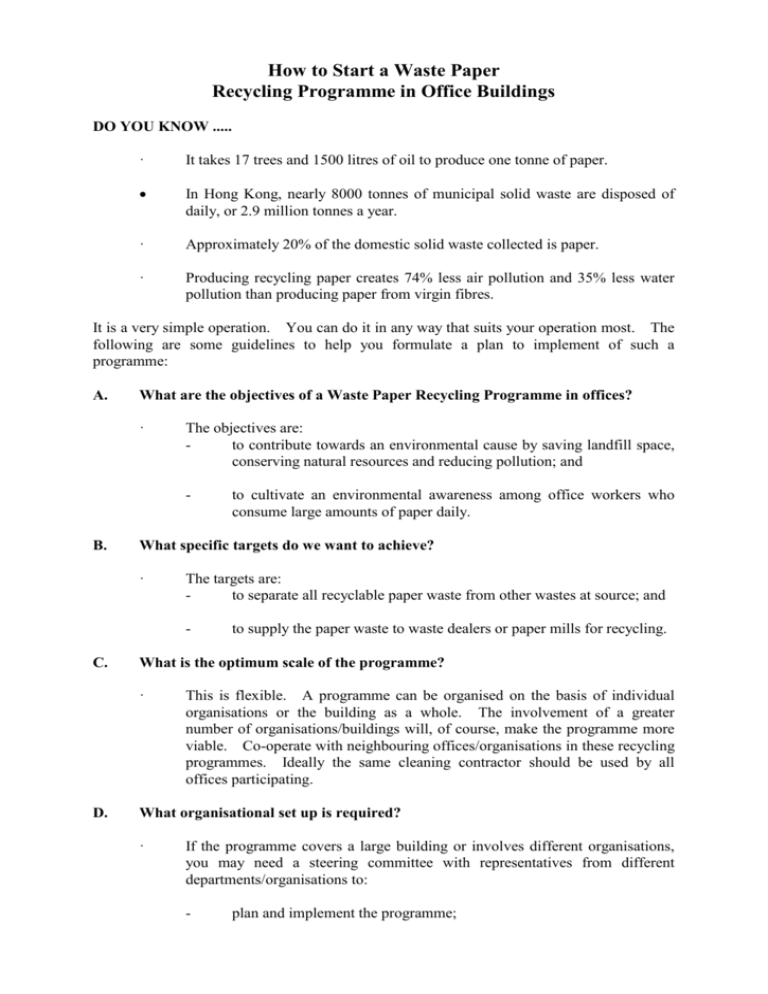
How to Start a Waste Paper Recycling Programme in Office Buildings DO YOU KNOW ..... · It takes 17 trees and 1500 litres of oil to produce one tonne of paper. In Hong Kong, nearly 8000 tonnes of municipal solid waste are disposed of daily, or 2.9 million tonnes a year. · Approximately 20% of the domestic solid waste collected is paper. · Producing recycling paper creates 74% less air pollution and 35% less water pollution than producing paper from virgin fibres. It is a very simple operation. You can do it in any way that suits your operation most. The following are some guidelines to help you formulate a plan to implement of such a programme: A. What are the objectives of a Waste Paper Recycling Programme in offices? · The objectives are: to contribute towards an environmental cause by saving landfill space, conserving natural resources and reducing pollution; and - B. What specific targets do we want to achieve? · The targets are: to separate all recyclable paper waste from other wastes at source; and - C. to supply the paper waste to waste dealers or paper mills for recycling. What is the optimum scale of the programme? · D. to cultivate an environmental awareness among office workers who consume large amounts of paper daily. This is flexible. A programme can be organised on the basis of individual organisations or the building as a whole. The involvement of a greater number of organisations/buildings will, of course, make the programme more viable. Co-operate with neighbouring offices/organisations in these recycling programmes. Ideally the same cleaning contractor should be used by all offices participating. What organisational set up is required? · If the programme covers a large building or involves different organisations, you may need a steering committee with representatives from different departments/organisations to: - plan and implement the programme; - · E. liaise with the cleaning contractor and the waste paper collector; and publicise the programme and solicit the support of all employees. The appointment of "Recycling Co-ordinators" or "Floor Captains" who are enthusiastic persons with organisational ability and good communication skill is essential particularly for multi-storey or multi-organisation operation. They will be responsible for: - explaining the programme in detail to the employees of different organisations and staff accommodated on different floors; - ensuring that the collection facilities mentioned below are readily provided and properly maintained; and - addressing problem areas after the programme begins. Are there any facilities required? · You will need to provide the following for the collection and storage of waste paper: (I) small containers for disposing waste paper (you may make use of unwanted cardboard boxes and label them as "green boxes" for identification purposes). Select containers to fit your individual needs, as dictated by space limitations, and the quantities of waste paper generated. They should be clearly labelled and placed nearby existing litter-bins, and (ii) designate a corner in the general office as the "newspaper bank" for collecting unwanted newspapers. F. Are all kinds of paper recyclable? · Not all papers can be recycled. Depending on the specific requirements of certain paper mills, the following are the usual DOs and DON'Ts: DO recycle · · · · · · · With office paperletterhead, business forms, offset paper, scratch paper, copy paper Coloured paper Photo copies Adding machine tape Index cards Computer printout paper Standard business cards DON'T recycle · · · · · · · · · · Adhesive removable notes Overhead transparencies Carbon Paper Envelopes with plastic windows Blueprint paper Cellophane Film Spiral binders Magazines/books using glue for binding Lunch boxes, wax paper, · · · Brochures and Newsletters (if not on glossy paper) Magazines/books with stapled/sowed binding (any coated glossy cover should be removed)· Envelopes and folders (including stamps but remove adhesive flap or plastic window) Leaflets from junk mail · · papercups, paper plates Napkins, tissue, paper towel Self-adhesive stickers or those with glue or tape. Rubber bands, paper clips and staples are OK as they will be removed in the recycling process but large metal fasteners and other contaminants should be removed. (Note : High grade white office papers such as computer printout is of higher value and should where possible be separated from other paper waste.) G. Who collects the separated waste paper? · Your current cleaning contractor will collect waste paper from the "green boxes". Arrangements should be made with them regarding the frequency of emptying the boxes and newspaper banks. The contractor will liaise with the waste dealer/paper mill on arrangements for final delivery. Many waste dealers will provide a pick-up service on a daily basis if the quantity is sufficient. Well co-ordinated collection arrangements avoid undesirable storage of large quantities of waste paper in your building. H. Are there any financial implications? · No cost need be incurred except for any spending on publicity. · Agreement should be sought with the cleaning contractor over the selling price of the waste paper and whether any revenue generated is to be shared with management. This however is a delicate issue since the contractor may have been previously making his own arrangements to sell the paper, though unseparated. It should be borne in mind that this is an exercise in responsible waste management and social necessity, not in profitmaking. I. How to publicise the programme? · Promotion and education are the keys to a successful recycling programme. This could be achieved through: - an appeal start up letter from senior management to all staff; - display of posters in the common areas of the office/building; and - visits to various sections and departments by the Recycling Coordinator. J. Where to seek advice? · The back of this guideline shows a list of waste paper dealers who can provide pick-up service. Before approaching them however you should consult your cleaning contractor. He may already have made contact. For a detailed list of waste paper companies, please refer to the Hong Kong Telephone Co's Hong Kong Commercial/Industrial Guide on the category of Waste Paper. * Leaflets can be obtained from the Environmental Campaign Committee Secretariat,45/F, Revenue Tower, 5 Gloucester Road, Wanchai, Hong Kong. · For technical advice on recyclables, call the Environmental Protection Department (Tel:2755 2750). K. Reviews · Periodic reviews of the operation of the programme are useful for making improvements and for keeping up momentum. · Regular communication with staff involved is essential in order to keep them informed of the progress and achievements of the programme. L. Waste Minimisation · The primary goal is to reduce quantities of waste, i.e. to use less paper and to recycle what we must use. The programme will therefore be much more meaningful if it is complemented by a campaign to minimise the consumption of paper in your organisation. There are many opportunities for reducing paper waste. You may be able to add other ideas to the following suggestion: - reuse the paper which has been used on one side only for scrap paper; - cut down on paper for memos; - make two-sided copies; - minimise the number of files; - promote electronic mailing; - ask to be removed from junk mailing lists. M. Use Recycled Products · To go a step further in promoting the environmental image of your organisation, use recycled paper for stationery, printing, packaging, etc. A successful paper recycling industry depends on a stable and long-term market for its products. You can make a valuable contribution in this respect.
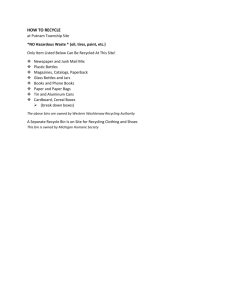
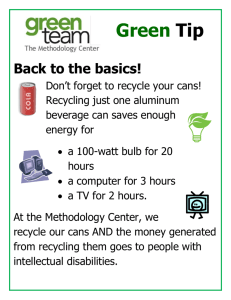
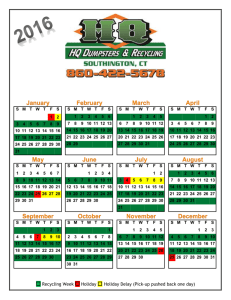
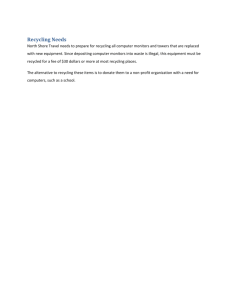
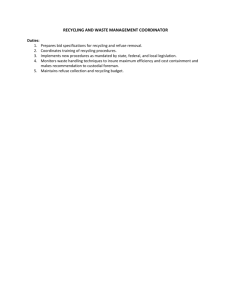
![School [recycling, compost, or waste reduction] case study](http://s3.studylib.net/store/data/005898792_1-08f8f34cac7a57869e865e0c3646f10a-300x300.png)